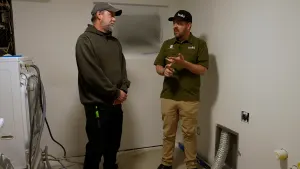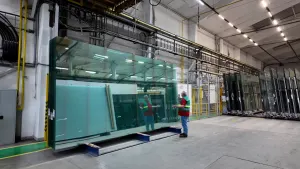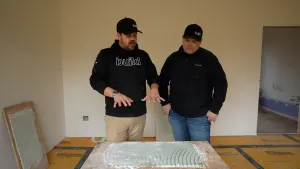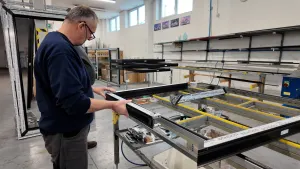Whether you’re a builder, architect, designer, or homeowner, you know that it's the secret, quiet, and often experienced-but unseen-that has the most profound effect on us. Imagine, for example, an elegant living room with a stunning feature wall. Then without a sound, there is a dramatic entrance through a doorway that just moments before was unseen…
Maybe it looks something like this:

Imagine the entrance the homeowner would make! These door panels are designed to close utterly flush against the walls based on a two-way damper design that yields soundless and effortless opening and closing. The hidden door hardware enables unique movement so that the door recesses in and slides sideways effortlessly while there are no visible floor tracks to spoil the surprise. And when it is closing time, you pull the door and watch it quietly disappear into the surrounding walls.
This unique hardware movement is an entirely new experience that everyone can enjoy repeatedly. It can help separate two worlds in space or simply access a walk-in closet. Either way, the All-New MFU-1200 system will impress its users.
At the heart of the MFU-1200 system is an innovative roller carriage designed to ride smoothly along a concealed upper track. This carriage features a two-way dampening system that prevents doors from being slammed when they are opened or closed. But what makes the roller carriage unique is how it can travel around the curved portion of the upper track to close the door flush with the surrounding walls quietly. Designing the dampers and rollers into a single component allows the system to function with a sleeker, less obstructive track. This means that your hidden room hardware will stay “hidden.”

The MFU-1200 is the 2nd generation of Sugatsune’s Monoflat Unison that touts improvements over the original MFU-1000 with more features, smoother performance, and a higher level of durability. It even supports more oversized, wider doors that can now weigh up to 154 lbs. Like its predecessor, the MFU-1200 is fully adjustable to ensure a clean, symmetrical reveal. Still, this time around is the introduction of its self-adjustment feature that automatically ensures that doors stay centered. Tie that together with a system that requires fewer parts, and you get a system that is much easier to install. The MFU-1200 is the epitome of elegance and function. The hardware is dressed in a high-end flat black finish to provide a clean, upscale appearance combined with extremely high durability, passing 100,000 open/close cycle tests. 
Sugatsune has been the leader in manufacturing hardware to create hidden doors for the Build Show Network. This new system will create a unique experience every time you design a secret opening. So, if luxury performance that drives a WOW experience is the goal you’re trying to achieve, the MFU-1200 is the system that will deliver it.
Builder Pro Tip
When implementing hidden door systems, a mockup from the carpenter on-site can make a world of difference in getting the details correct. Matt Risinger suggests ordering the hardware ahead of time, creating a mockup with some plywood, and watching in surprise how the details can be enhanced by doing just a few things slightly differently.
Things to think about when creating this mockup:
- How does that hardware interact with door jams?
- How does the cladding on the door flush up with the cladding on the walls?
And don't be surprised if you find yourself adding these into numerous homes once you get started. You may find that the architects and homeowners end up loving the samples, and you're working through many in the coming years.

 Share on facebook
Share on facebook Tweet
Tweet Email
Email Share on Linkedin
Share on Linkedin















